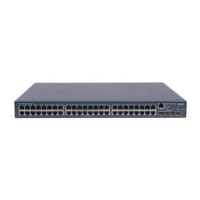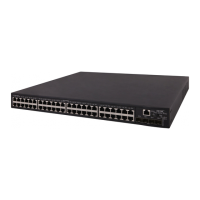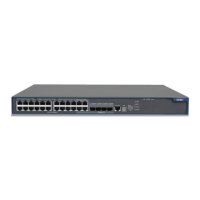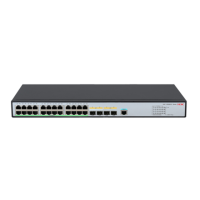1-8
Field Description
Power port class
PoE device type, which can be:
z PSE: power sourcing equipment
z PD: powered device
PSE power supported Indicates whether the device can operate as a PSE.
PSE power enabled Indicates whether the device is operating as a PSE.
PSE pairs control ability Indicates whether the PSE-PD pair control is available.
Power pairs
PoE mode, which can be Signal (PoE via signal lines) or Spare (PoE
via spare lines).
Port power classification
Port power classification of the PD, which can be the following:
z Class 0
z Class 1
z Class 2
z Class 3
z Class 4
Link aggregation supported Indicates whether link aggregation is supported.
Link aggregation enabled Indicates whether link aggregation is enabled.
Aggregation port ID Aggregation group ID, which is 0 if link aggregation is not enabled.
Maximum frame Size Maximum frame size supported
Location format
Location information format, which can be:
z Invalid, indicating the format of the location information is
invalid.
z Coordinate-based LCI, indicating the location information is
coordinate-based.
z Civic Address LCI, indicating normal address information.
z ECS ELIN, indicating a telephone for urgencies.
Location Information Location information
PoE PSE power source
PSE power type, which can be:
z Primary, indicating a primary power supply
z Backup, indicating a backup power supply
PoE service type PoE service type
Port PSE Priority
PoE power supply priority of PSE ports, which can be:
z Unknown
z Critical
z High
z Low
Port available power value Available PoE power on PSE ports, in watts
TLV type Unknown basic TLV type
TLV information Information contained in the unknown basic TLV type
Unknown organizationally-defined
TLV
Unknown organizationally specific TLV
TLV OUI OUI of the unknown organizationally specific TLV
TLV subtype Unknown organizationally specific TLV subtype
Index Unknown organization index
TLV information Information contained in unknown organizationally specific TLV
Local Interface
Local port that receives the LLDP information

